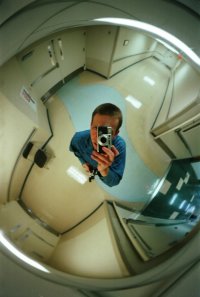Frank Lebon

Using animation, drawing, photography and film, Frank Lebon often combines elements that might not necessarily belong, removing their context to the point of dissonance. Intricate, imagined narratives inform his process, creating realities that fuse the possible and impossible. Despite his frame-by-frame planning, as well as thorough storyboarding and animatics, the tactility of human error is a part of his process.
What is your process, from development through to post-production?
“It depends on the project. The Cleaner had a subject matter, but beyond that, there was no particular plan. The edit was a multi-layered, very physical process in several stages that gave us something interesting at the end. Then there is the A$AP video, probably more like most of my other work, which I plan meticulously, from hand drawn storyboards to animatics. I almost have them planned to the frame in my head, then things go wrong. I guess that is my style: planning, then letting go. The mistakes are life coming in.”
What do you think makes a truly interesting image, and what is the key to capturing one?
“Authenticity, and a detail that exposes the relationship between the person making the image and the image itself.”
Do you notice a difference between your commercial work and personal work?
“I make an effort to blend them somewhat so that there isn't a rigid separation. That's what often sets apart certain commercial work - if you can genuinely incorporate your own unique style.
I've come to understand why some people who've been working for a while don't let their personal artistic side into commercial projects. It can be quite painful. Maintaining a bit of distance between my personal creative sphere and commercial work can help prevent feeling like my personal work is being attacked as it shifts the focus away from oneself. It becomes about meeting the client's needs. It's like walking a tightrope between being deeply invested in creating something compelling and maintaining a certain detachment.
I'd say about 90% of the time interesting commercial work is created when the artist has put their heart and soul into every step of the process, from start to finish. It's a struggle to push every ounce of creativity through. It's definitely a challenge. And if a piece of commercial work doesn't capture attention, it's often because that battle became too intense and compromises had to be made. That's been my experience, at least.”
Do or Be?
“I think it’s Be.”






